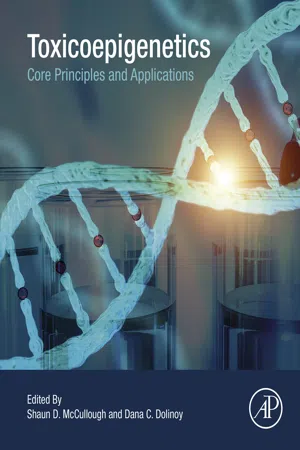
- 428 pages
- English
- ePUB (mobile friendly)
- Available on iOS & Android
About This Book
Toxicoepigenetics: Core Principles and Applications examines the core aspects of epigenetics, including chromatin biology, DNA methylation, and non-coding RNA, as well as fundamental techniques and considerations for studying each of these mechanisms of epigenetic regulation. Although its integration into the field of toxicology is in its infancy, epigenetics have taken center stage in the study of diseases such as cancer, diabetes, and neurodegeneration. Increasing the presence of epigenetics in toxicological research allows for a more in-depth understanding of important aspects of toxicology such as the role of the environment and lifestyle influencing the individual susceptibility to these effects and the trans-generational transmission of these health effects and susceptibilities. Methods chapters are included to help improve efficacy and efficiency of protocols in both the laboratory and the classroom. Toxicoepigenetics: Core Principles and Applications is an essential book for researchers and academics using epigenetics in toxicology research and study.
- Introduces the fundamental principles and practices for understanding the role of the epigenome in toxicology
- Presents the foundation of epigenetics for toxicologists with a broad range of backgrounds
- Discusses the incorporation of epigenetics and epigenomics into current toxicological studies and interpretation of epigenetic data in toxicological applications
Frequently asked questions
Information
Role of Histone Acetylation and Acetyltransferases in Gene Regulation
Abstract
Keywords
Introduction
History and Overview

Table of contents
- Cover image
- Title page
- Table of Contents
- Copyright
- Contributors
- Editors' Biography
- Introduction to the Role of the Epigenome in Health and Disease
- Section 1: Histone Modifications and Chromatin Structure
- Section 2: DNA Methylation
- Section 3: Noncoding RNAs
- Section 4: Special Considerations in Toxicoepigenetics Research
- Section 5: Protocols for Toxicoepigenetics Research
- Index